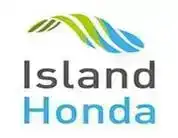Whale calf injury off Māʻalaea, Maui is likely from a vessel strike, boaters urged to keep distance
A whale calf spotted in distress off of Māʻalaea Bay on Maui Friday, is likely suffering from blunt force injuries caused by a vessel strike. That’s the determination made by researchers with the Hawaiian Islands Humpback Whale National Marine Sanctuary.
The organization received reports from various on-water vessel operators of the suspected injury.
Researchers with the HIHWNMS were called to the scene to assess the situation, and enlisted the Pacific Whale Foundation to provide drone assessment support.
“Based on its size (16.6 feet), the calf is estimated to be 34 days old,” said Martin Van Aswegen, Ph.D. student at the University of Hawaiʻi’s Marine Mammal Research Program in a news release.
Aswegen says the whale’s size indicates that the strike likely occurred within 1 month of its birth in Hawaiʻi’s breeding grounds.
“The calf exhibits limited ability to swim, relying on its mother, who has been observed propping it up at the surface,” according to researchers.
Researchers from the HIHWNMS/NOAA Fisheries Marine Mammal Health and Stranding Response Program and Pacific Whale Foundation collected various data to evaluate the whale’s health and injuries. As of 1:30 p.m. on Feb. 23, the mother and calf remained stationary a few hundred yards off Māʻalaea Harbor.
Vessel strikes continue to present a threat to local whale populations and can pose risks to mariners, according to organization leaders.
“In 2013, we initiated a study on the optimal boat speeds during whale watching season. These findings, along with other data compiled by HIHWNMS, demonstrate that reducing speeds, particularly to 15 knots or less when transiting and 6 knots or less when approaching/departing whales within 400 yards, will help mitigate the threat. These findings in conjunction with other research led to the collaborative development of the Go Slow, Whales Below campaign to help whales and ocean users,” said Jens Currie, Chief Scientist at the Pacific Whale Foundation.
Through this initiative, the Hawaiian Islands Humpback Whale National Marine Sanctuary, Pacific Whale Foundation, and the Department of Land and Natural Resources reminds mariners to exercise caution during peak whale season and adhere to best practices when operating around local humpback whales.
“For years, we’ve emphasized the importance of slower and more cautious speeds. Available data strongly suggests that transit speed when in the vicinity of whales should be 15 knots or less,” said Ed Lyman of the Hawaiian Islands Humpback Whale National Marine Sanctuary.
While the calf’s future remains uncertain, mariners using Māʻalaea Harbor are urged to maintain distance from the calf and its mother, allowing the injured calf the best possible chance for survival.
Any sightings of the calf can be reported to the NOAA Marine Wildlife Hotline at 1-888-256-9840. For further information on the current guidelines for boating near whale populations, visit https://dlnr.hawaii.gov/dobor/boating-with-whales/.
*Maui Now’s Wendy Osher contributed to this report.










